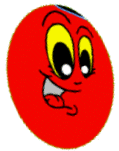Sukkot – Arba Minim – The four species are an etrog (citrus fruit), a palm branch (lulav), two willow branches (arava) and three myrtle branches (hadas). The six branches are bound together and referred to collectively as the lulav. The etrog is held separately.With these four species in hand, one recites a blessing and waves the species in all six directions (east, south, west, north, up and down, symbolizing the fact that HaShem is everywhere around us).
The origin of the four species can be found in the Book of Vayikra; in Parshat Emor, where the Torah commands: “And you shall take for yourselves on the First Day the fruit of a beautiful tree, the branches of date palms, branches of the myrtle tree, and branches of the willow tree, and you shall rejoice before HaShem for Seven Days.” (Vayikra 23:40)
Etrog
![]()
Shaped like a heart it symbolizes the driving force behind all of our actions.
Lulav
![]()
The Lulav comes from a date palm, the fruit has a good taste, but no smell. It symbolizes someone with knowledge of the Torah but no good deeds.
Hadas
![]()
The myrtle has a wonderful smell, this symbolizes the good deeds, but not knowledge of the Torah.
Aravah
![]()
The willow branch has neither good taste or smell. This symbolizes someone who has neither good deeds or knowledge of the Torah.
Holding these four in a tight bond represents the unity that is HaShem’s goal for the Jewish People. The bond represents the conversion of a set of separate individuals into a People, which is far greater than any individual in both Torah and Good Deeds, and is far more deserving than any individual of the blessings of HaShem.

